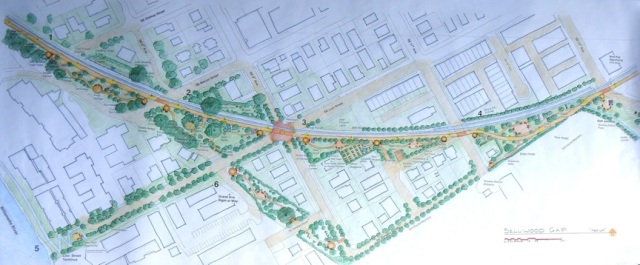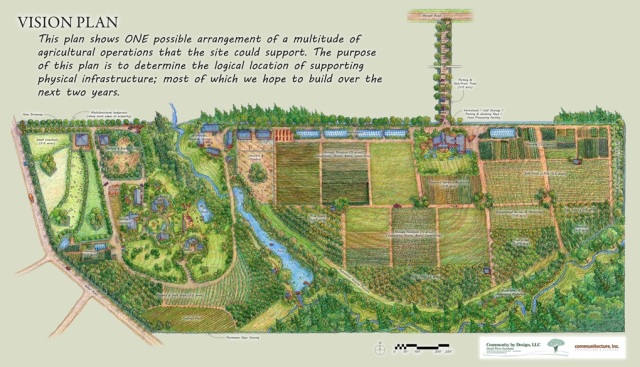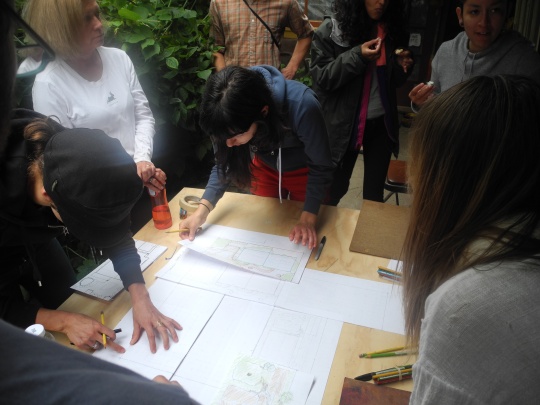
The Sellwood Gap is a citizen-led initiative to transform a series of undeveloped lots into a reflection of the needs and desires of the Sellwood Neighborhood. This community is very fortunate to have access to this amount of open space since most Portland neighborhoods have been developed without provision for many kinds of common spaces. The land was acquired through a Metro Bond Measure which provides for a wide variety of possibilities including open space, wild life habitat and corridors, native plantings, edible landscapes, and other possible ideas. The design depicted here is an early exploration that integrates nearly all of the diverse ideas that had been gathered to that point. It was prepared for presentation to Metro and Park’s Bureau staff as a way to explore a range of ideas, and to receive feedback. The next step included drafting a thorough community involvement plan that would lead to the creation of an actual design. The community design process has been underway since 2012, and implementation may happen in 2015. A further note: In 2012, just after an exciting community event at Sellwood’s SMILE Station concerning Food Forest design projects in Seattle, an intern at that time posted on this site that the Gap design was a specific kind of design related to Food Forests. We regret that enthusiastic over-statement, especially since the Gap project design process is still ongoing.





